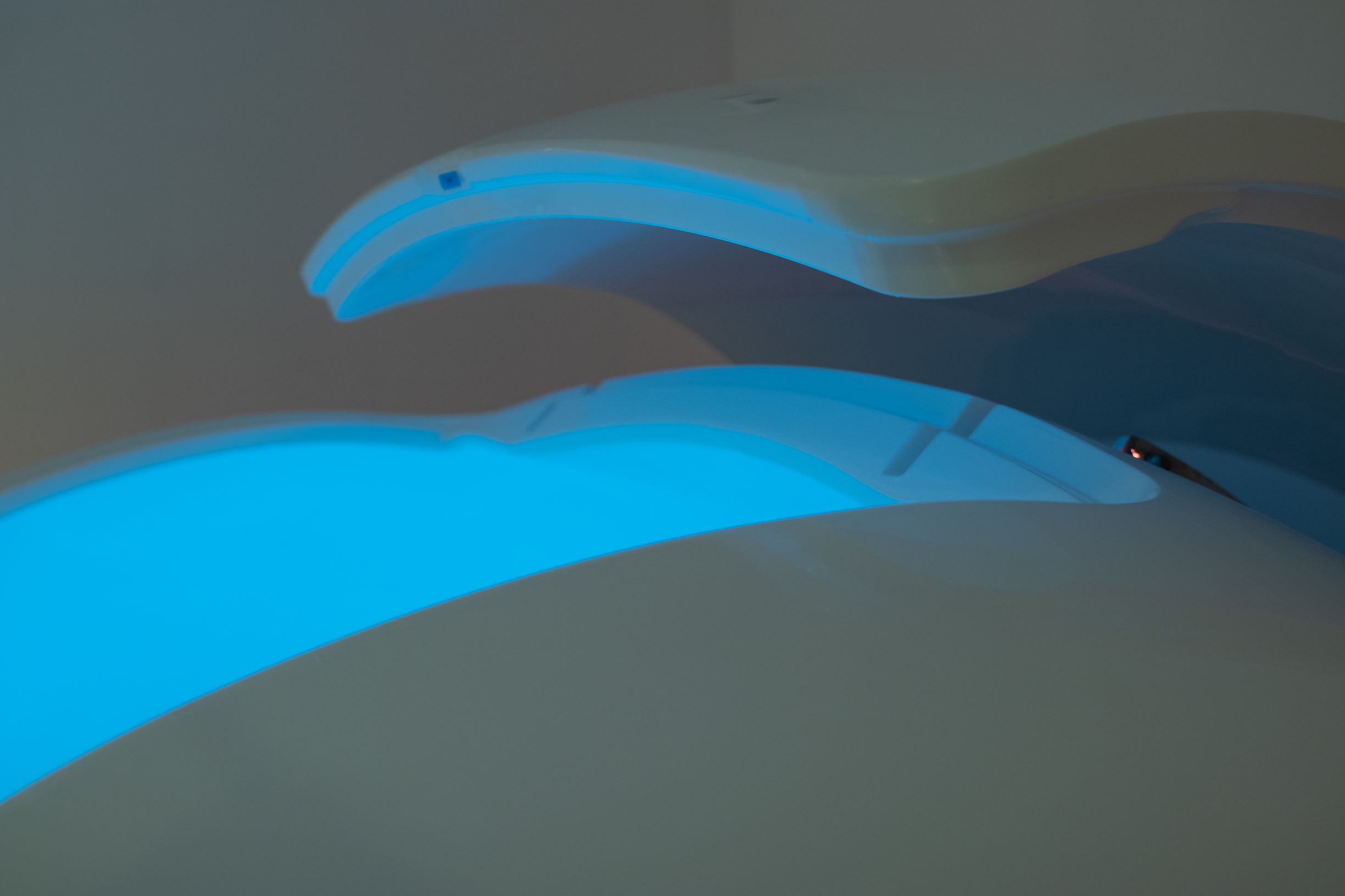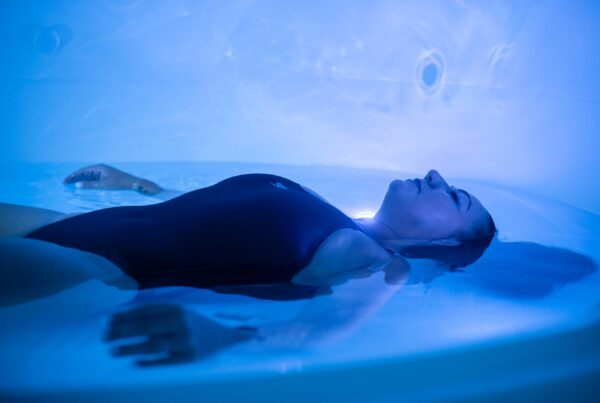What Is A Sensory Deprivation Tank?
Sometimes referred to as an isolation tank, or flotation tank, a sensory deprivation tank is used to restrict environment stimulation for therapeutic use (commonly referred to as Restricted Environmental Stimulation Therapy. Filled with body temperature water saturated with Epsom salt, it is a dark, soundproofed environment which is designed to allow the body and mind to enter deep states of relaxation. Being alone with your thoughts enveloped in warm water, darkness and of course salt, can have an incredible array of benefits.
Though they have been around in some shape or form since the 1950s, a modern sensory deprivation tank in 2019 can be spacious, with advanced technology to customise float experiences to suit a range of aims.
First created in 1954 by neuroscientist John C Lilly, the use of sensory deprivation tanks has had boom and bust periods. It’s recent resurgence fuelled by a growing body of credible research, and the growth of people’s focus on the importance of wellness.
In the 1960s, Lilly’s work was largely considered to depart from serious research when he admitted personal use of a sensory deprivation tank under the influence of LSD and ketamine.
Though early signs had been encouraging for understanding consciousness, and it’s relationship with physiology and the brain, it’s fair to say that his reports of communicating with aliens from other dimensions wasn’t taken seriously in all quarters of the academic community at the time (though psychedelics are currently being used in serious research for therapeutic uses). Since then, using a sensory deprivation tank has been reliably shown to be effective helping with a range of aspects of health and lifestyle.
Benefits Of Using Sensory Deprivation Tanks:
- Pain relief
- Stress relief
- Improving sleep
- Reducing anxiety
- Enhancing creativity
- Boosting athletic performance
Why Do They Work?
Pain relief:-
Chronic pain can be extremely challenging for anyone who suffers with it, making it difficult to get rest, in itself leading to stress and anxiety. Floating as a therapy not only removes external pressures due to floating in salt water, the body will actually relax the nervous system. Research is beginning to show this can be effective therapy for fibromyalgia, with significant improvements to the sensation of pain in sufferers. Added to this, floatation can also increase secretion of beta-endorphins, hormones which are understood to not only promote a feeling of improved mood but act as powerful natural pain inhibitors. It’s the really good stuff when it comes to naturally managing pain.
Stress relief:-
Stress is increasingly well understood to be something that whilst essential for life, in excess can significantly increase risks of chronic illnesses. In the modern world it can be easy for body and mind to get out of sync, with the bombardment of sensory input particularly powerful in city living. Cortisol is often termed the ‘stress hormone’, and being something easy to test, has been consistently shown to reduce by ~20% after a 60 minute float session. It’s also something often linked to blood pressure, which floatation has been shown to reduce.
Improving sleep:-
Undoubtedly linked to stress and anxiety, which are covered in this article, another way floating is believed to aid sleep is by helping rebalance the body’s natural magnesium levels. Whilst being supported by 550KG of Epsom salt, your body will be cocooned in magnesium sulfate. Magnesium deficiency is a common cause of restless leg syndrome, which often goes undetected, but can cause individuals to wake as much as sleep apnea.
Reducing anxiety:-
If you’ve ever suffered from anxiety, you’ll know it can be at times overwhelming. Incorporating use of a sensory deprivation tank into a positive and healthy wellness routine can be a powerful tool for keeping it in check. Linked to the hormonal rebalancing that aids stress relief, there can similarly powerful benefits in treating anxiety. Indeed, there have been some amazing findings on the effectiveness of sensory deprivation tanks in helping a variety of anxiety disorders.
Enhancing creativity:-
‘Theta state’ is a state of relaxation so profound that brainwaves actually reduce in frequency, and it’s known to be ideal for creative thought. On average, people achieve this state after 40 minutes in a sensory deprivation tank. Though this is an area that could benefit from larger scale research, there have been numerous studies which show positive and significant increases on the Guilford creativity test and other measures.
Boosting athletic performance:-
Another significant area of benefit, is physical recovery, with various studies showing major reduction in muscle pain, inflammation, believed to have been boosted by the increase of blood flow and oxygenation from float therapy. This increased physical recovery enables athletes to train more without increasing risk of injury. Added to this, floating has actually been shown to increase skill level and accuracy, owing to the improved focus it enables!

The essence is that by removing external stimuli, pressures, and distractions, the body & mind are able to effectively pause many of their normal functions, freeing up surplus energy to focus on regeneration. Our carefully created environment at Float Hub is precision engineered to offer the perfect environment to achieve this, and bring the benefits of using a sensory deprivation tank in London to a whole new level. By crafting a float spa without compromising on style, yet with local and sustainable suppliers, floating with us offers an incredible experience unlike anything else.
Why not book your first floating session today, and discover what 60 minutes of total darkness in body temperature salt water can do for you?
Other blog posts you might find interesting:





